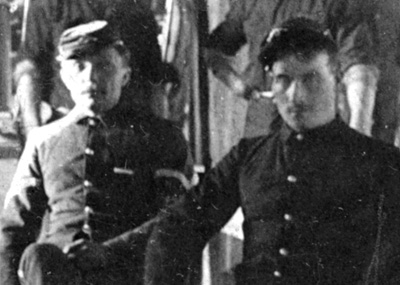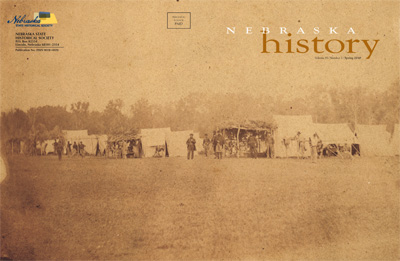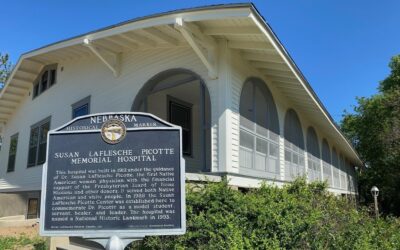
Historian John McDermott wrote about the physical hardships of a frontier soldier’s life, describing the western plains as “an environment that could be frustrating, unrelenting, noxious, infectious, and lethal.” Here’s what he says about the army’s smallest enemy, the flea:
Fleas also seemed to abound, particularly in places where humans had lived for a time. Mrs. Andrew S. Burt, the wife of the commanding officer of Fort Laramie in 1888, pasted a clipping in her cookbook describing Dr. Hazen’s method for getting rid of fleas. It read:
“Set a lighted candle in a dish of water in the middle of the room. The fleas, attracted by the light, will hop in, and in the morning, the dish will present the appearance of Pharaoh and his host drowned in the Red Sea. It is more effective than Persian or any other powder. It is strategy, my boy, and the fleas never learn it till it is too late.”

Soldiers of the Eighth Infantry inside barracks at Fort Robinson. RG1517-119-2
Mary Rippey Heistand had another means of treatment. At Camp Poplar River in Montana, the post was infested with sand fleas, the buildings having been built on the site of an abandoned Indian village. She described her method as follows: “Four or five times a day I have undressed myself when fleas were torturing me. It was my custom to spread a white blanket to stand on as I removed my clothing. I was thus enabled to see the annoyances—tiny only in size—against the white blanket, and on it their legs tangled and made them an easy prey in their turn. The process was slow, as I shook each garment before laying it aside. Sometimes when the insects came to light they escaped with an agility unequaled, jumping clear of the blanket. At one time I was put to bed with fever induced by these miserable insects. They had tormented me so that I scarcely knew what I was doing; my temperature arose and I collapsed. The physician pronounced my malady ‘flea fever’.”

Cover of Spring 2010 issue of Nebraska History. Photo shows headquarters of the Second Nebraska Volunteer Cavalry, on the Sioux River above Sioux City, Iowa, 1863. RG4389-22
Read McDermott’s complete article, “The Plains Forts: A Harsh Environment“ (PDF)
—David Bristow, Editor
(Posted 6/8/2010; updated 6/13/2022)



